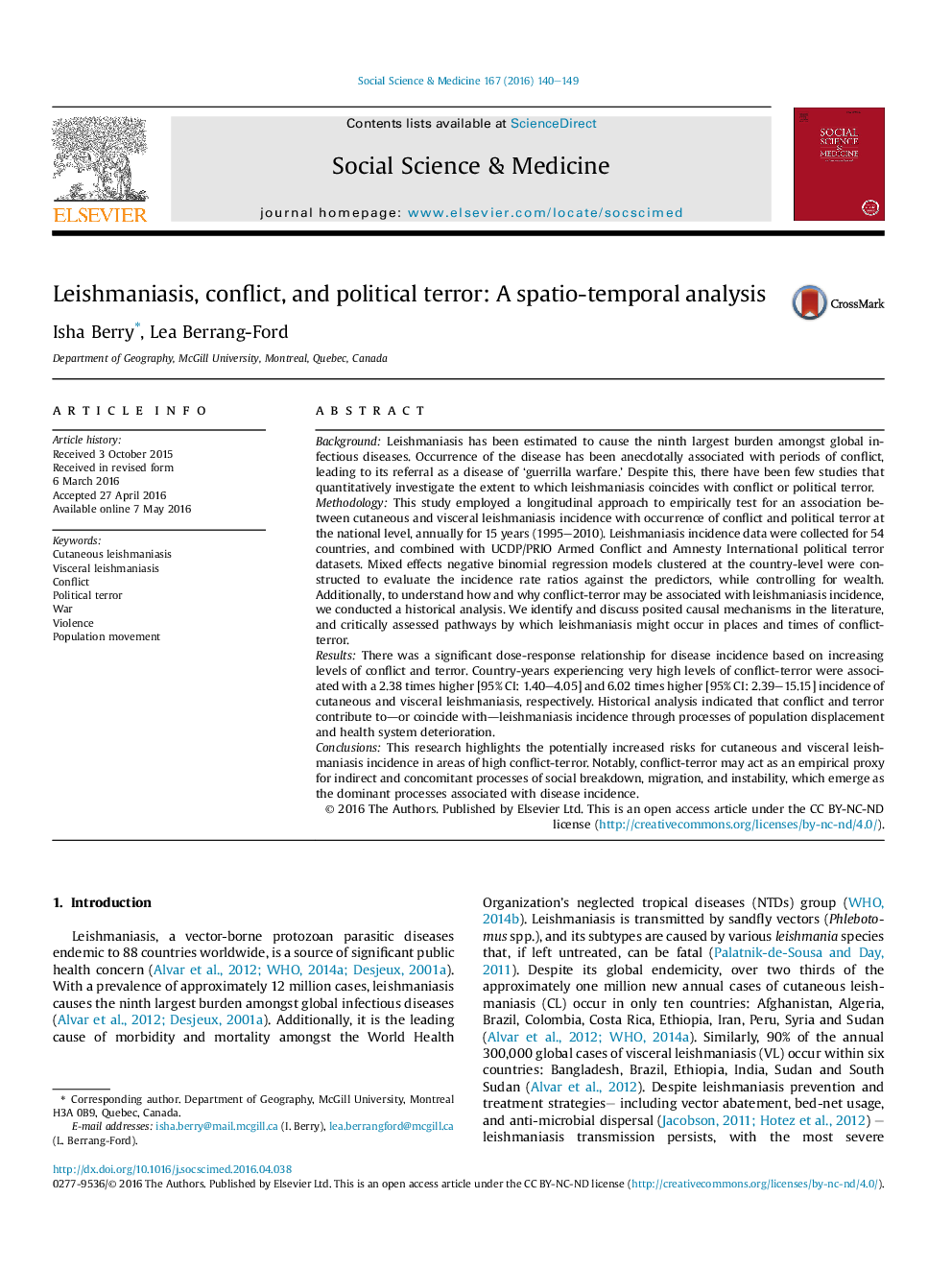| کد مقاله | کد نشریه | سال انتشار | مقاله انگلیسی | نسخه تمام متن |
|---|---|---|---|---|
| 5046955 | 1476002 | 2016 | 10 صفحه PDF | دانلود رایگان |
- Leishmaniasis incidence is associated with increasing levels of conflict-terror.
- Country-years with very high conflict-terror have the highest CL and VL incidence.
- Posited mechanisms for this are population displacement and health system decline.
- Terror is a more sensitive descriptor for distal determinants of leishmaniasis.
BackgroundLeishmaniasis has been estimated to cause the ninth largest burden amongst global infectious diseases. Occurrence of the disease has been anecdotally associated with periods of conflict, leading to its referral as a disease of 'guerrilla warfare.' Despite this, there have been few studies that quantitatively investigate the extent to which leishmaniasis coincides with conflict or political terror.MethodologyThis study employed a longitudinal approach to empirically test for an association between cutaneous and visceral leishmaniasis incidence with occurrence of conflict and political terror at the national level, annually for 15 years (1995-2010). Leishmaniasis incidence data were collected for 54 countries, and combined with UCDP/PRIO Armed Conflict and Amnesty International political terror datasets. Mixed effects negative binomial regression models clustered at the country-level were constructed to evaluate the incidence rate ratios against the predictors, while controlling for wealth. Additionally, to understand how and why conflict-terror may be associated with leishmaniasis incidence, we conducted a historical analysis. We identify and discuss posited causal mechanisms in the literature, and critically assessed pathways by which leishmaniasis might occur in places and times of conflict-terror.ResultsThere was a significant dose-response relationship for disease incidence based on increasing levels of conflict and terror. Country-years experiencing very high levels of conflict-terror were associated with a 2.38 times higher [95% CI: 1.40-4.05] and 6.02 times higher [95% CI: 2.39-15.15] incidence of cutaneous and visceral leishmaniasis, respectively. Historical analysis indicated that conflict and terror contribute to-or coincide with-leishmaniasis incidence through processes of population displacement and health system deterioration.ConclusionsThis research highlights the potentially increased risks for cutaneous and visceral leishmaniasis incidence in areas of high conflict-terror. Notably, conflict-terror may act as an empirical proxy for indirect and concomitant processes of social breakdown, migration, and instability, which emerge as the dominant processes associated with disease incidence.
Journal: Social Science & Medicine - Volume 167, October 2016, Pages 140-149
